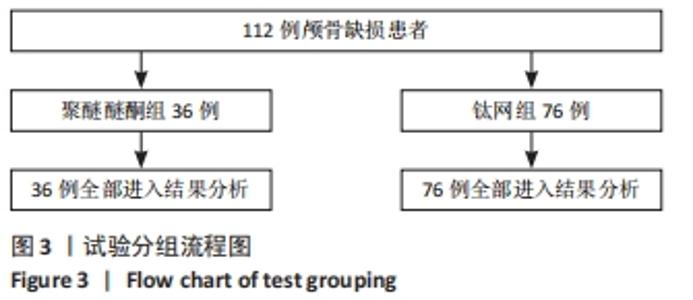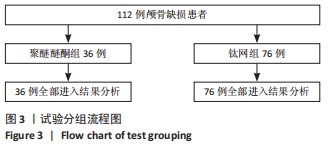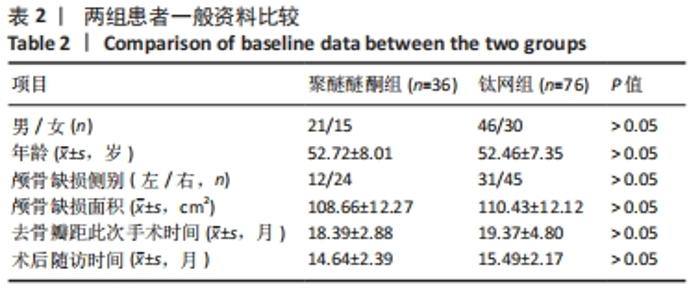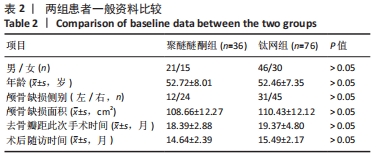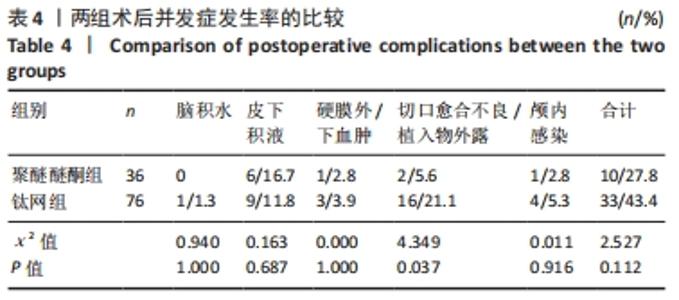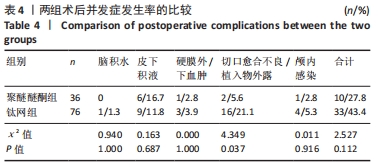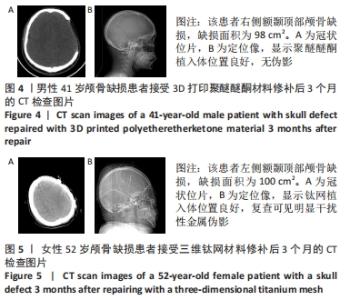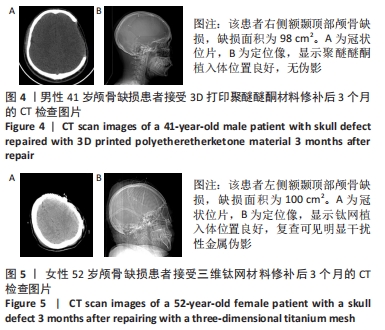[1] GOLDSTEIN JA, PALIGA JT, BARTLETT SP. Cranioplasty: indications and advances. Curr Opin Otolaryngol Head Neck Surg. 2013;21(4):400-409.
[2] 王湘,黄浩,王海全,等.自体颅骨、钛网与聚醚醚酮修补颅骨缺损的临床应用分析[J].临床和实验医学杂志,2021,20(15):1643-1647.
[3] 王森,刘威,廉庆北,等.超早期三维钛网颅骨修补术的临床研究[J].现代生物医学进展,2017,17(15):2861-2869.
[4] JONKERGOUW J, VAN DE VIJFEIJKEN SE, NOUT E, et al. Outcome in patient-specific PEEK cranioplasty: A two-center cohort study of 40 implants. J Craniomaxillofac Surg. 2016;44(9):1266-1272.
[5] BADHEY A, KADAKIA S, MOURAD M, et al. Calvarial Reconstruction. Semin Plast Surg. 2017;31(4):222-226.
[6] SHAH AM, JUNG H, SKIRBOLL S. Materials used in cranioplasty: a history and analysis. Neurosurg Focus. 2014;36(4):E19
[7] MALCOLM JG, MAHMOOTH Z, RINDLER RS, et al. Autologous Cranioplasty is Associated with Increased Reoperation Rate: A Systematic Review and Meta-Analysis. World Neurosurg. 2018;116:60-68.
[8] CABRAJA M, KLEIN M, LEHMANN TN. Long-term results following titanium cranioplasty of large skull defects. Neurosurg Focus. 2009; 26(6):E10.
[9] WIGGINS A, AUSTERBERRY R, MORRISON D, et al. Cranioplasty with custom-made titanium plates--14 years experience. Neurosurgery. 2013;72(2):248-256,256.
[10] 寿鹏里,胡婷婷.3D打印在颅骨缺损修补中的应用[J].科学技术创新,2018(9):88-89.
[11] 卢磊,陈旭义,李一鹏,等.颅骨修补材料研究现状及3D打印技术应用前景[J].中国组织工程研究,2016,20(52):7885-7890.
[12] 穆苍山,靳欢,金永健,等.3D打印聚醚醚酮修补材料在颅骨缺损修补手术中的应用效果分析[J].航空航天医学杂志,2019,30(7): 774-776.
[13] HANASONO MM, GOEL N, DEMONTE F. Calvarial reconstruction with polyetheretherketone implants. Ann Plast Surg. 2009;62(6):653-655.
[14] QIU S, YOU W, WANG H, et al. Allergic Epidural Effusion Following Polyetheretherketone Cranioplasty. J Craniofac Surg. 2019;30(3): e241-e243.
[15] SUN Y, HU Y, YUAN Q, et al. Association between metal hypersensitivity and implant failure in patients who underwent titanium cranioplasty. J Neurosurg. 2018;131(1):40-46.
[16] 陈智谦,穆雄铮.颅骨缺损修补材料应用的Meta分析[J].中国组织工程研究,2018,22(30):4913-4920.
[17] ZANATY M, CHALOUHI N, STARKE RM, et al. Complications following cranioplasty: incidence and predictors in 348 cases. J Neurosurg. 2015; 123(1):182-188.
[18] LETHAUS B, SAFI Y, TER LAAK-POORT M, et al. Cranioplasty with customized titanium and PEEK implants in a mechanical stress model. J Neurotrauma. 2012;29(6):1077-1083.
[19] 赵元立,王亮,赵雅慧,等.3D打印技术在神经外科应用及发展前景[J].中国微侵袭神经外科杂志,2020,25(3):97-100.
|
